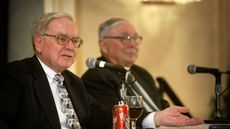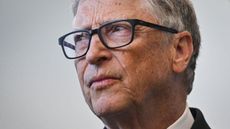US inflation may have peaked, but it remains a threat
US inflation fell to 8.5% in July, down from 9.1% the previous month. But structural, not transitory, forces are pushing inflation higher. It could be around for some time yet.


Has US inflation finally peaked? Annual inflation fell to 8.5% in July, down from 9.1% the previous month. The fall was driven by a 7.7% month-on-month slump in US petrol prices in July. The data prompted traders to conclude that the Fed might not have to raise interest rates as aggressively as feared. Strong employment data – the economy added half a million jobs in July – has also encouraged bets that the economy may dodge a recession. The S&P 500 index has gained 11% in a month.
Even if the US has passed the peak, it will be some time before inflation comes back down to earth. As Campbell Harvey of Research Affiliates points out, there has been so much inflation in recent months that even if prices now remain flat for the rest of the year – an unlikely scenario – then headline annual inflation will still be at more than 6% in December.
Inflation is structural, not transitory
And structural forces (such as de-globalisation) are pushing prices higher. The data “gives as much reason for consternation as for celebration”, says The Economist. Annual core inflation – a measure that strips out volatile food and energy prices – is running at 5.9%, the same as the previous month.
Subscribe to MoneyWeek
Subscribe to MoneyWeek today and get your first six magazine issues absolutely FREE

Sign up to Money Morning
Don't miss the latest investment and personal finances news, market analysis, plus money-saving tips with our free twice-daily newsletter
Don't miss the latest investment and personal finances news, market analysis, plus money-saving tips with our free twice-daily newsletter
The strong labour market is fuelling pay growth, with wages up by an annual 5.2% over the past three months. That suggests price rises are becoming embedded in the economy, heralding “structural” rather than “transitory” inflation. While the headline numbers were good, “inflation remains both broad-based and far above the Fed’s target”, says James Mackintosh in The Wall Street Journal. Investors’ optimism is misplaced – “there’s no sign the Federal Reserve will change its mind and agree with investors that rates should come down again next year”.
Equity traders are also failing to price in the effects of the coming slowdown on corporate earnings, which they blithely expect to continue rising this year and next. Bond markets seem to be expecting “one sharp round of tightening –comprised of a rise in short-term interest rates to just above 3%” that will “be enough to bring inflation down to 2.5% with stable growth and no dent in earnings”, says Bob Prince of Bridgewater Associates.
That looks optimistic, says John Mauldin in his Thoughts from the Frontline newsletter. “Bond investors seem to have a great deal of faith that the Fed… will make inflation recede sharply and soon.” Markets usually know better than individuals, but there has been so much central bank intervention in the bond market that arguably “it is no longer a market in any meaningful sense”. Central bankers are likely to lose their nerve when recession bites, slashing rates too early even while inflation is not back under control. The result? “Extended stagflation is our most likely destination.”

Alex is a member of the UK team at CVC Capital Partners. Prior to joining CVC, Alex worked in the London office of AEA Investors, a mid-market private equity firm. Previously he was part of the UK M&A team at Barclays Capital. Alex holds a BSc in economics from the University of Warwick.
-
-
 Number of ISA millionaires tops 4,000
Number of ISA millionaires tops 4,000The number of ISA millionaires has surged to more than 4,000 - what does it take to hit the seven-figure sum?
By Katie Binns Published
-
 NS&I August Premium Bonds draw - check from today
NS&I August Premium Bonds draw - check from todayNS&I bond investors can check from today to see if they scooped a prize in this month’s draw. With more than £404m to be handed out in prizes, find out what you won.
By Tom Higgins Published
-
 UK wage growth hits a record high
UK wage growth hits a record highStubborn inflation fuels wage growth, hitting a 20-year record high. But unemployment jumps
By Vaishali Varu Published
-
 UK inflation remains at 8.7% ‒ what it means for your money
UK inflation remains at 8.7% ‒ what it means for your moneyInflation was unmoved at 8.7% in the 12 months to May. What does this ‘sticky’ rate of inflation mean for your money?
By John Fitzsimons Published
-
 VICE bankruptcy: how did it happen?
VICE bankruptcy: how did it happen?Was the VICE bankruptcy inevitable? We look into how the once multibillion-dollar came crashing down.
By Jane Lewis Published
-
 Would a food price cap actually work?
Would a food price cap actually work?Analysis The government is discussing plans to cap the prices of essentials. But could this intervention do more harm than good?
By Nicole García Mérida Published
-
 What is Warren Buffett’s net wealth?
What is Warren Buffett’s net wealth?Features Warren Buffett is one of the world’s richest people. But how did he make his money?
By Jacob Wolinsky Last updated
-
 What is Rihanna's net worth?
What is Rihanna's net worth?Features Rihanna became the youngest self-made billionaire in 2022. Here’s how she made her money.
By Jacob Wolinsky Published
-
 UK inflation slides to 8.7% - what does it mean for your money?
UK inflation slides to 8.7% - what does it mean for your money?News Inflation has dropped below 10% for the first time in months, but with food prices at a 45-year high, is this good news and what does it mean for your money?
By Tom Higgins Published
-
 What is Bill Gates's net worth?
What is Bill Gates's net worth?Features Bill Gates is one of the world’s richest people, but how did he make his money?
By Jacob Wolinsky Last updated









